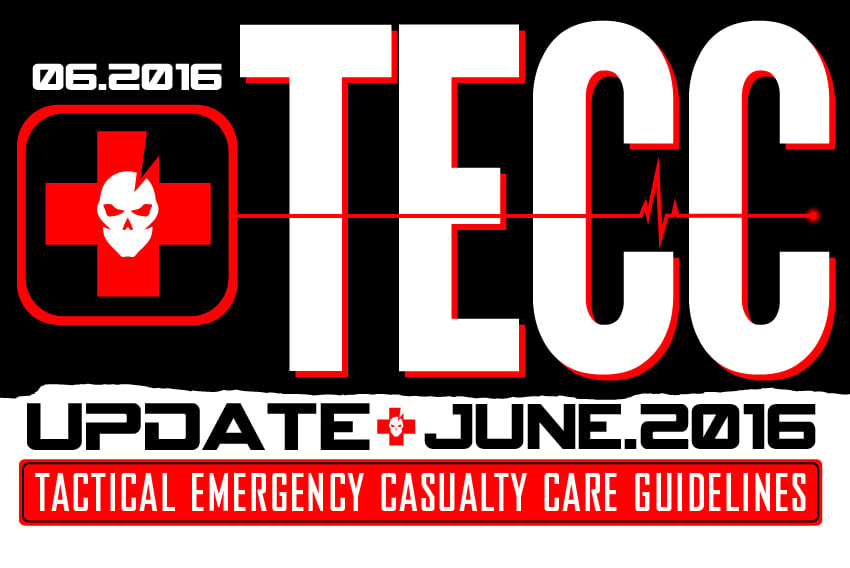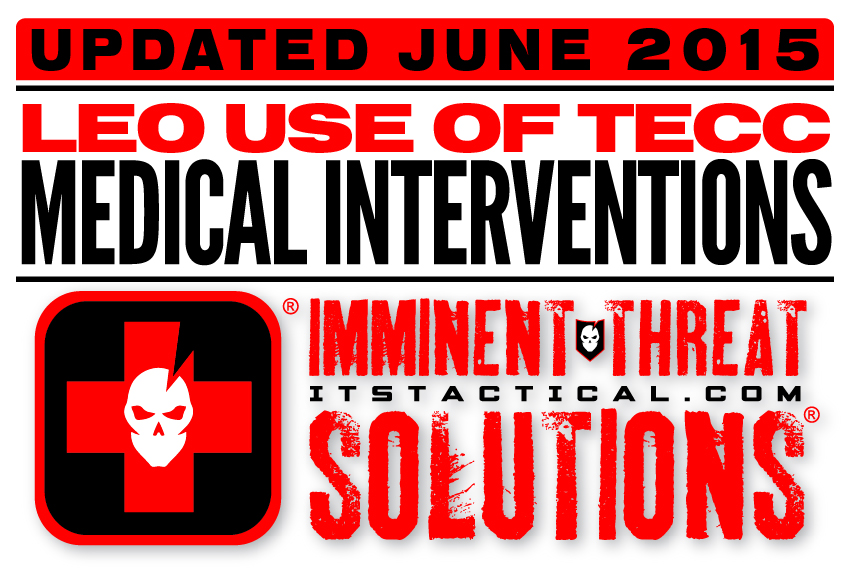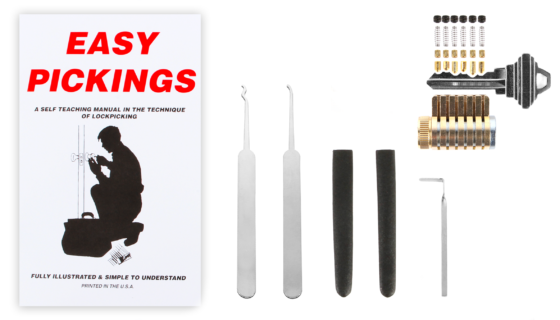Don’t Have EMS Training? Good News, There’s Now TCCC-Level Care Guidelines for First Responders Too
Don’t Have EMS Training? Good News, There’s Now TCCC-Level Care Guidelines for First Responders Too
On ITS, we’ve always followed both the CoTCCC (Committee on Tactical Combat Casualty Care) Guidelines and the C-TECC (Committee for Tactical Emergency Casualty Care) Guidelines very closely. In fact, we always kept both in mind when developing our line of proven Trauma Kits.
The Committee for Tactical Emergency Casualty Care (C-TECC), which was developed to bring the TCCC level of care to civilian first responders, has now introduced guidelines for first responders that aren’t trained to the level of an EMS provider. As stated by E. Reed Smith, MD and Nelson Tang, MD, co-chairmen of the C-TECC, “specific items, like basic and advanced life support interventions have been removed to both reflect the proper scope of the non-EMS end user and to avoid confusion. It remains the opinion of the Board of Directors that civilian first responders should act only within their allowed scope.”
This is a big announcement and it’s great to see guidelines like these developed for those not trained as EMS Providers, like some Law Enforcement Officers and Firefighters.
We’ve posted these new guidelines below and also have them available in .pdf format here to download.
DIRECT THREAT CARE (DTC) / HOT ZONE Guidelines
- Mitigate any threat and move to a safer position (e.g. Return fire, utilize less lethal technology, assume an overwhelming force posture, etc.).
- Recognize that threats are dynamic and may be ongoing, requiring continuous threat assessments.
- Direct the law enforcement/first responder casualty to stay engaged in tactical operation if able and appropriate.
- Extract casualty to a safer position:
- Instruct the casualty to move to a safer position and apply self-aid if capable.
- If the casualty is responsive but cannot move, a rescue plan should be devised and implemented.
- If a casualty is unresponsive, weigh the risks and benefits of an immediate rescue attempt in terms of manpower and likelihood of success. Remote medical assessment techniques for survivability should be considered.
- Stop life threatening external hemorrhage if present and reasonable depending on the
immediate threat, severity of the bleeding and the extraction distance to safety. Consider moving to safety prior to application of the tourniquet if the situation warrants.
- Direct casualty to apply direct pressure to wound and/or own effective tourniquet if able.
- Tourniquet application:
- Apply the tourniquet as high on the limb as possible, including over the clothing if present.
- Tighten until cessation of bleeding and move to safety.
- Consider quickly placing unresponsive casualty in recovery position to protect airway.
INDIRECT THREAT CARE (ITC) / WARM ZONE Guidelines
- Any casualty with a weapon should have that weapon made safe and secured once the threat is neutralized and/or if mental status is altered.
- Bleeding:
- Assess for and control any unrecognized major bleeding:
- Use a tourniquet or an appropriate pressure dressing with deep wound packing (either plain gauze or, if available, hemostatic dressing to control life- threatening bleeding in an extremity or a junctional area:
– Apply the tourniquet over the clothing as proximal – high on the limb – as possible, or if able to fully expose and evaluate the wound, apply directly to the skin at least 2-3 inches above wound (DO NOT APPLY OVER THE JOINT).
– For any traumatic total or partial amputation, a tourniquet should be applied as high on the extremity as possible regardless of bleeding.
- Use a tourniquet or an appropriate pressure dressing with deep wound packing (either plain gauze or, if available, hemostatic dressing to control life- threatening bleeding in an extremity or a junctional area:
- If available, immediately apply a junctional tourniquet device for anatomic junctional areas where bleeding cannot be easily controlled by direct pressure and hemostatics/dressings.
- Reassess all tourniquets that were hastily applied during Direct Threat/Hot Zone
Care.
- Evaluate the wound for continued bleeding or a distal pulse in the extremity.
– If there is continued bleeding or a distal pulse is still present, either tighten the existing tourniquet further or apply a second tourniquet, side- by-side and, if possible, proximal to the first, to eliminate the distal pulse.
- Evaluate the wound for continued bleeding or a distal pulse in the extremity.
- If possible, mark all tourniquet sites with the time of tourniquet application.
- Assess for and control any unrecognized major bleeding:
- Airway Management:
- If the casualty is unconscious or is conscious but unable to follow commands:
- Clear mouth of any foreign bodies (vomit, food, teeth, gum, etc).
- Apply basic chin lift or jaw thrust maneuver to open airway.
- Consider placing a nasopharyngeal airway.
- Place casualty in the recovery position to maintain the open airway.
- If the casualty is conscious and able to follow commands:
- Allow casualty to assume position of comfort, including sitting up. Do not force to lie down.
- If the casualty is unconscious or is conscious but unable to follow commands:
- Breathing:
- All open and/or sucking torso wounds should be treated by immediately applying a vented or non-vented occlusive seal to cover the defect.
-
Monitor any casualty with penetrating torso trauma for the potential development of a tension pneumothorax. Most common presentation will be penetrating chest injury with subsequent increasing shortness of breath and difficulty breathing and/or increasing anxiety/agitation.
- If tension pneumothorax appears to be developing, removing the occlusive dressing and/or “burp” the chest seal.
- Casualties with concern for developing tension pneumothorax should be prioritized for evacuation to higher level of care.
- Shock Management/Resuscitation:
- Assess for hemorrhagic shock
- Altered mental status (in the absence of head injury) and weak or absent peripheral pulses are the best field indicators of shock.
- If not in shock:
- Casualty may drink if conscious, can swallow and there is a confirmed delay in evacuation to care.
- If in shock:
- Prioritize for rapid evacuation any patient, especially those with penetrating torso injury, displaying signs of shock.
- Assess for hemorrhagic shock
- Prevention of Hypothermia:
- Minimize casualty’s exposure and subsequent heat loss.
- Keep protective gear on or with law enforcement casualty if feasible.
- Keep casualty warm and dry:
– Place the casualty onto an insulated surface to reduce conductive heat loss as soon as possible.
– Minimize exposure to the elements.
– Replace wet clothing with dry if possible.
– Cover casualty with commercial warming device, blankets, poncho liners,sleeping bags, or anything that will retain heat and keep the casualty dry.
- Minimize casualty’s exposure and subsequent heat loss.
- Reassess casualty:
- Perform a rapid blood sweep, front and back, checking for additional injuries. Tearing, cutting, or otherwise exposing the wound may be necessary.
- Burns:
- Stop the burning process.
- Cover burns with loose dry dressings if available.
- Large area burns and signs of significant airway burns or smoke inhalation (e.g. singed facial hair, soot/burns/swelling around the nose or mouth) should be prioritized for rapid evacuation.
- Burn patients are more susceptible to hypothermia – minimize heat loss as above.
- Prepare Casualty for Movement
- Consider operational and environmental factors for safe and expeditious evacuation.
- Secure casualty to a movement assist device when available.
- If vertical extraction required, ensure casualty secured appropriately.
- Burn patients are more susceptible to hypothermia – minimize heat loss as above.
- Communicate with the casualty if possible.
- Encourage, reassure and explain care.
- Cardiopulmonary Resuscitation:
- CPR within this phase of care for victims of blast or penetrating trauma who have no pulse, no ventilations and no other signs of life will likely not be successful and should not be attempted.
- In other circumstances, performing CPR may be of benefit and may be considered in the context of the operational situation.
- Documentation of Care:
- Communication of assessments and treatments rendered should be passed along with the casualty to the next level of care. This should be documented on a simple standardized casualty care card with the casualty to the next level of care.
EVACUATION CARE (EVAC) / COLD ZONE Guidelines
- Reassess all interventions applied in previous phases of care.
- If multiple wounded, perform primary triage for priority and destination of evacuation to a higher level of care.
- Airway Management:
- The principles of airway management in Evacuation Care / Cold Zone are similar to that in ITC / Warm Zone.
- If the casualty is unconscious or is conscious but unable to follow commands:
- Clear mouth of any foreign bodies (vomit, food, teeth, gum, etc).
- Apply basic chin lift or jaw thrust maneuver to open airway.
- Consider placing a nasopharyngeal airway.
- Place casualty in the recovery position to maintain the open airway.
- If the casualty is conscious and able to follow commands:
- Allow casualty to assume position of comfort, including sitting up. Do not force to lie down.
- Breathing:
- All open and/or sucking chest wounds should be treated immediately by applying a vented or non-vented occlusive seal to cover the defect. Monitor the casualty for the potential development of a subsequent tension pneumothorax.
- Reassess casualties who have had chest seals applied. Any developing tension pneumothorax should be treated as described in ITC / Warm Zone.
- If available, administration of oxygen may be of benefit for all traumatically injured patients, especially for the following types of casualties:
– Chest injuries
– Torso injuries associated with shortness of breath
– Unconscious or altered mental status
– Post-blast injuries
– Casualty in shock
– Casualty at altitude
- Bleeding:
- Fully expose wounds to reassess for and control any unrecognized major bleeding:
- Use a tourniquet or an appropriate pressure dressing with deep wound packing (either plain gauze or, if available, hemostatic gauze) to control life-threatening bleeding in an extremity or a junctional area:
– Apply the tourniquet over the clothing as proximal– high on the limb– as possible, or if able to fully expose and evaluate the wound, apply directly to the skin 2-3 inches above wound (DO NOT APPLY OVER THE JOINT).
– For any traumatic total or partial amputation, a tourniquet should be applied regardless of bleeding.
- Use a tourniquet or an appropriate pressure dressing with deep wound packing (either plain gauze or, if available, hemostatic gauze) to control life-threatening bleeding in an extremity or a junctional area:
- If available, immediately apply a junctional tourniquet device for anatomic junctional areas where bleeding cannot be easily controlled by direct pressure and hemostatics/dressings.
- Reassess all tourniquets that were hastily applied during prior phases of care.
- Evaluate the wound for continued bleeding or a distal pulse in the extremity.
– If there is continued bleeding or a distal pulse is still present, either tighten the existing tourniquet further or apply a second tourniquet, side-by-side and, if possible, proximal to the first, to eliminate the distal pulse.
- Evaluate the wound for continued bleeding or a distal pulse in the extremity.
- Clearly mark all tourniquet sites with the time of tourniquet application.
- Fully expose wounds to reassess for and control any unrecognized major bleeding:
- Shock Management/Resuscitation:
- Re-assess for developing hemorrhagic shock
- Altered mental status (in the absence of head injury) and weak or absent peripheral pulses are the best field indicators of shock.
- Utilize additional medical assessment and monitoring equipment that may be available in this phase.
- If not in shock:
- Casualty may drink if conscious, can swallow and there is a confirmed delay in evacuation to care.
- Allow casualty to assume position of comfort.
- If in shock:
- Prioritize for rapid evacuation any penetrating torso injury patient displaying signs of shock.
- Consider alternative methods of transportation to definitive medical care if traditional methods delayed or unavailable. Ensure coordination of patient distribution to avoid overwhelming any one medical receiving facility.
- If altered mental status due to suspected TBI and casualty not in shock, position the casualty supine and raise the casualty’s head to 30 degrees.
- Re-assess for developing hemorrhagic shock
- Prevention of Hypothermia:
- Minimize casualty’s exposure and subsequent heat loss.
- Keep protective gear on or with law enforcement casualty if feasible.
- Keep casualty warm and dry:
– Place the casualty onto an insulated surface to reduce conductive heat loss as soon as possible.
– Minimize exposure to the elements.
– Replace wet clothing with dry if possible.
– Cover casualty with commercial warming device, blankets, poncho liners, sleeping bags, or anything that will retain heat and keep the casualty dry. - Move into a vehicle or warmed structure if possible.
- Minimize casualty’s exposure and subsequent heat loss.
- Reassess Casualty:
- Complete full front and back re-assessment checking for additional injuries. Inspect and dress known wounds that were previously deferred.
- Frequently re-check the casualty for any changes in condition. Worsening status at any point should prompt priority evacuation. Consider alternative methods of transportation to definitive medical care if traditional methods delayed or unavailable. Ensure coordination of patient distribution to avoid overwhelming any one medical receiving facility.
- Burns:
- Stop the burning process.
- Cover burns with loose dry dressings if available. Clean, dry sheets are effective for casualties with large area burns.
- Large area burns and signs of significant airway burns or smoke inhalation (e.g. singed facial hair, soot/burns/swelling around the nose or mouth) should be prioritized for rapid evacuation. Consider alternative methods of transportation to definitive medical care if traditional methods delayed or unavailable. Ensure coordination of patient distribution to avoid overwhelming any one medical receiving facility.
- Burn patients are more susceptible to hypothermia – minimize heat loss as above.
- Prepare Casualty for Movement:
- Consider environmental factors for safe and expeditious evacuation.
- Secure casualty to a movement assist device when available.
- If vertical extraction required, ensure casualty secured appropriately.
- Communicate with the casualty if possible and with the operational medical provider or medical facility assuming care of the casualty.
- Encourage, reassure and explain care and expectations to patient, family and/or caregivers.
- Notify receiving provider or facility of wounds, patient condition and treatments applied.
- Cardiopulmonary Resuscitation
.
- CPR may have a larger role during the evacuation phase especially for patients with electrocution, hypothermia, non-traumatic arrest or near drowning.
- Documentation of Care:
- Continue or initiate documentation of clinical assessments, treatments rendered and changes in the casualty’s status in accordance with local protocol.
- Forward this information with the casualty to the next level of care.
GOALS, PRINCIPLES, SKILL SETS
Care provided within the TECC guidelines is inherent upon individual first responder training, available equipment, local medical protocols and medical director approval.
I. Direct Threat Care (DTC)/Hot Zone
Primary Goals:
- Accomplish the mission with minimal additional casualties.
- Prevent any casualty from sustaining additional injuries.
- Keep response team maximally engaged in neutralizing the existing threat (e.g. active shooter, barricade, high threat warrant etc.).
- Minimize public harm.
Operational Principles:
- Establish tactical supremacy and defer in-depth medical interventions if engaged in ongoing direct threat mitigation (e.g. active fire fight, dynamic explosive scenario, etc.).
- Threat mitigation techniques will minimize risk to casualties and the providers. These should include techniques and tools for rapid casualty access and egress.
- Triage should be deferred to a later phase of care. Prioritization for extraction is based on resources available and the tactical situation.
- Minimal trauma interventions are warranted during this phase.
- Consider bleeding control. a. Tourniquet application is the primary “medical” intervention to be considered. b. For response personnel, tourniquet should be readily available and accessible with either hand.
DTC/Hot Zone Required Skill Set (applied per approved SOP/protocol only):
- Direct pressure and hasty tourniquet application
- Consider PACE Methodology- Primary, Alternative, Contingency, Emergency
- Commercially available tourniquets
- Field expedient tourniquets
- Tactical casualty extraction
- Rapid placement in recovery position
II. Indirect Threat Care (ITC) / Warm Zone
Primary Goals:
- Goals 1-4 as above with DTC / Hot Zone care
- Stabilize the casualty as required to permit safe extraction to dedicated treatment sector or medical evacuation assets.
Operational Principles:
- Maintain tactical supremacy and complete the overall mission.
- As applicable, ensure safety of both first responders and casualties by rendering weapons safe and/or rendering any adjunct tactical gear safe for handling (flash bangs, gas canisters, etc).
- Conduct dedicated patient assessment and initiate appropriate life-saving interventions as outlined in the ITC / Warm Zone guidelines. DO NOT DELAY casualty extraction/evacuation for non life-saving interventions.
- Consider establishing a casualty collection point if multiple casualties are encountered.
- Unless in a fixed casualty collection point, triage in this phase of care should be limited
to the following categories:
- Uninjured and/or capable of ambulation or self-extraction
- Deceased/expectant
- All others
- Establish communication with the tactical and/or unified command and request or verify initiation of casualty extraction/evacuation.
- Prepare casualties for extraction and document care rendered for continuity of care purposes.
ITC/Warm Zone Required Skill Set (applied per approved SOP/protocol only):
- Hemorrhage Control:
- Application of direct pressure
- Application of tourniquet
- Consider PACE Methodology- Primary, Alternative, Contingency, Emergency
- Commercially available tourniquets
- Field expedient tourniquets
- Perform wound packing with gauze or hemostatic agent
- Application of pressure dressing
- Airway
- Perform Manual Maneuvers (chin lift, jaw thrust, recovery position)
- Insert nasal pharyngeal airway
- Breathing:
- Application of effective occlusive chest seal
- Apply oxygen
- Recognize the symptoms of tension pneumothorax
- “Burp” occlusive dressing
- Circulation:
- Recognize the symptoms of hemorrhagic shock
- Hypothermia prevention:
- Apply available materials to prevent heat loss
- Wound management:
- Initiate basic burn treatment
- Casualty evacuation:
- Move casualty (drags, carries, lifts)
- Secure casualty to litter
- Other Skills:
- Monitor casualty
- Recognize need and requirements for and establish Casualty Collection Point.
III. Evacuation Care (Evac)/Cold Zone
Primary Goals:
- Maintain any lifesaving interventions applied during DTC and ITC phases.
- Provide rapid and secure evacuation to an appropriate medical receiving facility.
- Provide good communication and patient care data between field medical providers and fixed receiving facility.
- Avoid additional preventable causes of death.
Operational Principles:
- Reassess the casualty or casualties for efficacy of all applied medical interventions.
- Utilize a triage system/criteria per local policy that considers priority AND destination to ensure proper distribution of patients.
- Utilize additional available resources to maximize advanced care.
- Avoid hypothermia.
- Communication is critical, especially between tactical elements and non-tactical EMS teams.
- Maintain situational awareness: in dynamic events, there are NO threat free areas.
Evac/Cold Zone Required Skill Set (applied per approved SOP/protocol only):
- Same as ITC/Warm Zone
- Apply triage prioritization of casualties
- Communicate effectively between non-medical, pre-hospital and hospital medical assets











Discussion